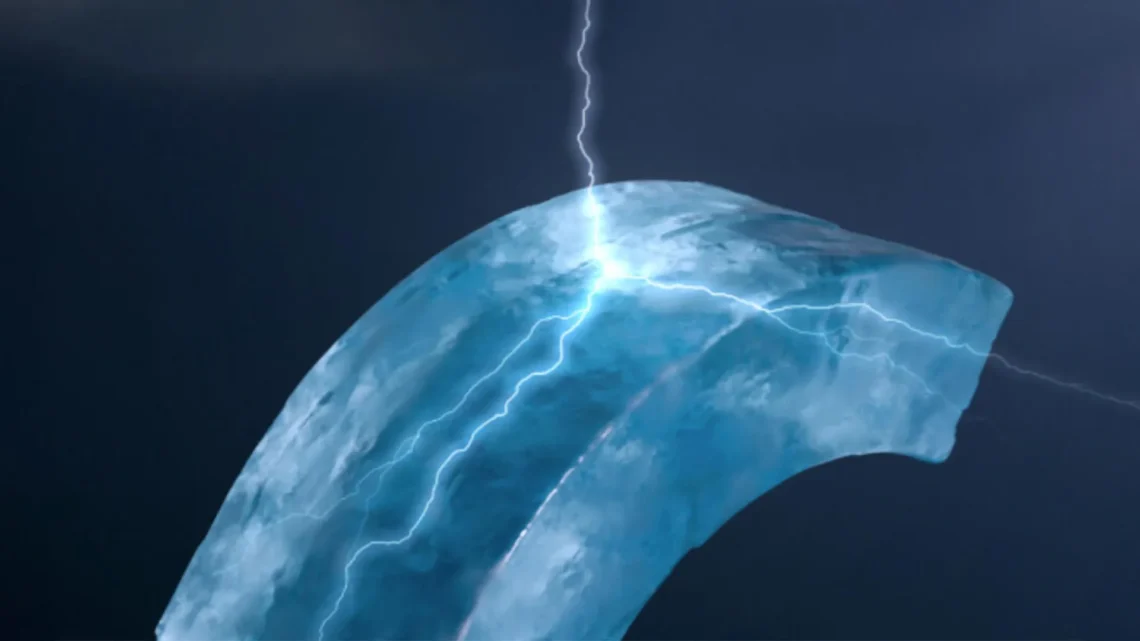A study co-led by ICN2 has discovered that ice is a flexoelectric material, meaning it can generate electricity when unevenly deformed. Published in Nature Physics, this finding could have significant technological implications while also helping to explain natural phenomena like lightning.
Frozen water is one of Earth’s most abundant substances, found in glaciers, on mountain peaks, and in polar ice caps. While we know a lot about ice, its properties continue to reveal exciting insights.
An international research collaboration including ICN2 at the UAB campus, Xi’an Jiaotong University (Xi’an), and Stony Brook University (New York), has shown for the first time that regular ice acts as a flexoelectric material. This means it can generate electricity under mechanical stress. This discovery may significantly impact future technological devices and offer explanations for natural occurrences such as lightning in thunderstorms.
The study, published in Nature Physics, marks a pivotal advancement in understanding the electromechanical properties of ice. “We found that ice generates electric charge when subjected to mechanical stress at all temperatures. Additionally, we discovered a thin ‘ferroelectric’ layer on the ice surface at temperatures below -113ºC (160K). This indicates that the ice surface can develop a natural electric polarization, which can be reversed by applying an external electric field—similar to flipping the poles of a magnet. This surface ferroelectricity is particularly interesting as it shows that ice can generate electricity in two ways: ferroelectricity at low temperatures and flexoelectricity up to 0 °C,” explains Dr. Xin Wen of the ICN2 Oxide Nanophysics Group, one of the study’s lead researchers. This property places ice alongside advanced electroceramic materials like titanium dioxide, which are used in technologies like sensors and capacitors.
Ice, Flexoelectricity, and Thunderstorms
One of the most surprising aspects of this discovery is its connection to natural phenomena. The study’s results suggest that ice’s flexoelectric properties could contribute to cloud electrification during thunderstorms, thus influencing the formation of lightning.
Lightning occurs when an electric potential builds up in clouds due to collisions between ice particles that become electrically charged. However, the process by which ice particles gain this charge has been unclear, as ice is not piezoelectric—it doesn’t generate charge simply through compression.
The study indicates that ice can become electrically charged when it undergoes inhomogeneous deformations, such as bending or irregularly deforming. “During our experiments, we measured the electric potential generated by bending a slab of ice. Specifically, we placed the block between two metal plates connected to a measuring device, and the results aligned with previous observations in ice-particle collisions during thunderstorms,” says ICREA Prof. Gustau Catalán, leader of the Oxide Nanophysics Group at ICN2.
These findings suggest that flexoelectricity might help explain the generation of the electric potential leading to lightning during storms. Future Perspectives
The research team is already looking into new ways to use these properties of ice for practical applications. While it’s still early for specific solutions, this discovery could pave the way for developing new electronic devices that incorporate ice as an active material and could be fabricated directly in cold environments.
Summary: Researchers have found that ice is a flexoelectric material that can generate electricity when deformed. This discovery not only has potential technological applications but also offers insights into the formation of lightning during thunderstorms. The study opens new avenues for using ice in electronic devices, particularly in cold environments.





